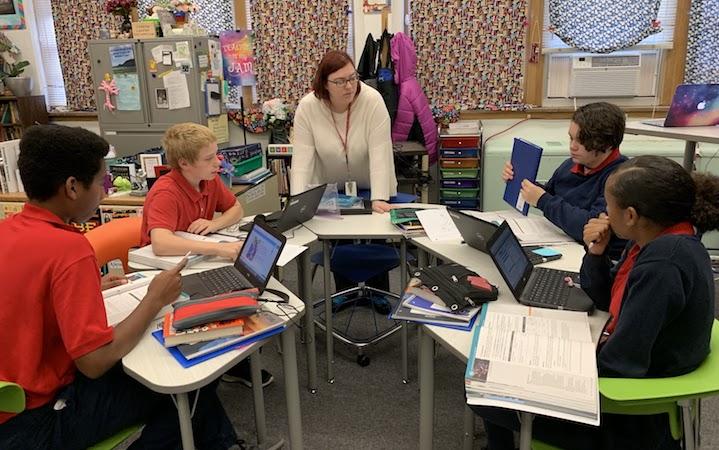Some may wonder, "If I have blended-learning, what is the point of pre-teaching concepts if I can go back and remediate?" In response to this question, a significant element of blended learning is equity: giving students exactly what they need. When teaching a whole-group lesson, every student must be able to access the lesson's objective. Equity is the reason why pre-teaching is essential.
When considering pre-teaching, the next logical question is:
How do I know which students will be in my pre-teach small group?
Data, of course!
Data tells us stories. Look at class data to see which students are not progressing after whole-group instruction. Using software programs with rich data reports can illuminate who needs extra guidance on the objective you are teaching the entire group.
Another source of data for pre-teaching students are Individualized Education Plans or IEPs. An IEP is a report that gives you accommodations for students with diverse learning needs. Often, IEPs require teachers to pre-teach elements of the lesson to give students better access to instruction.
A final source of data to use when determining a pre-teach is an Individualized Language Learner Plan. If you have students who are learning English, an ILLP will give you guidance on what additional supports your student may need and what language concepts the student has already mastered.
What should I cover in my pre-teach small group?
After you have decided which students will be in your pre-teach small groups, you need to determine what will be the highest-leverage piece of instruction. Here are some options:
Pre-teach Vocabulary
Students may need additional vocabulary support to succeed. Give students practice seeing and using content-specific language before the whole-group lesson. For example, if teaching a math lesson on adding two-digit numbers with regrouping, pre-teach vocabulary words like regrouping, carrying, addends, and total. These are concepts that the student may have the ability to understand but not necessarily have the language to grasp without a pre-teach. With this method, students who can grasp the concept are not stopped by their language acquisition.
Pre-teach Steps
Sometimes, students need help with executive functioning. Executive functioning is what helps us make decisions and organize information quickly. As a teacher, I found that students who experienced trauma were especially sensitive to tasks that require higher levels of executive functioning. Students who need support with executive functioning benefit from lessons where they receive the steps to the lesson objective before the whole group lesson. For example, if I taught a lesson on the main idea, I'd pull a small group and explicitly teach them the steps for finding the main idea before the whole-group lesson. My students felt empowered to participate in the lesson because they understood what the lesson expected of them and what was coming next.
In a classroom of students, there are so many learning needs and strengths. For times when whole-group lessons are needed, pre-teaching small groups of students will empower all students to access the content to be full members of the classroom learning community.
Have you used pre-teaching in your classroom? How did it go? What strategies did you use? Let us know in the comments below.
 Alliance for Catholic Education
Alliance for Catholic Education
